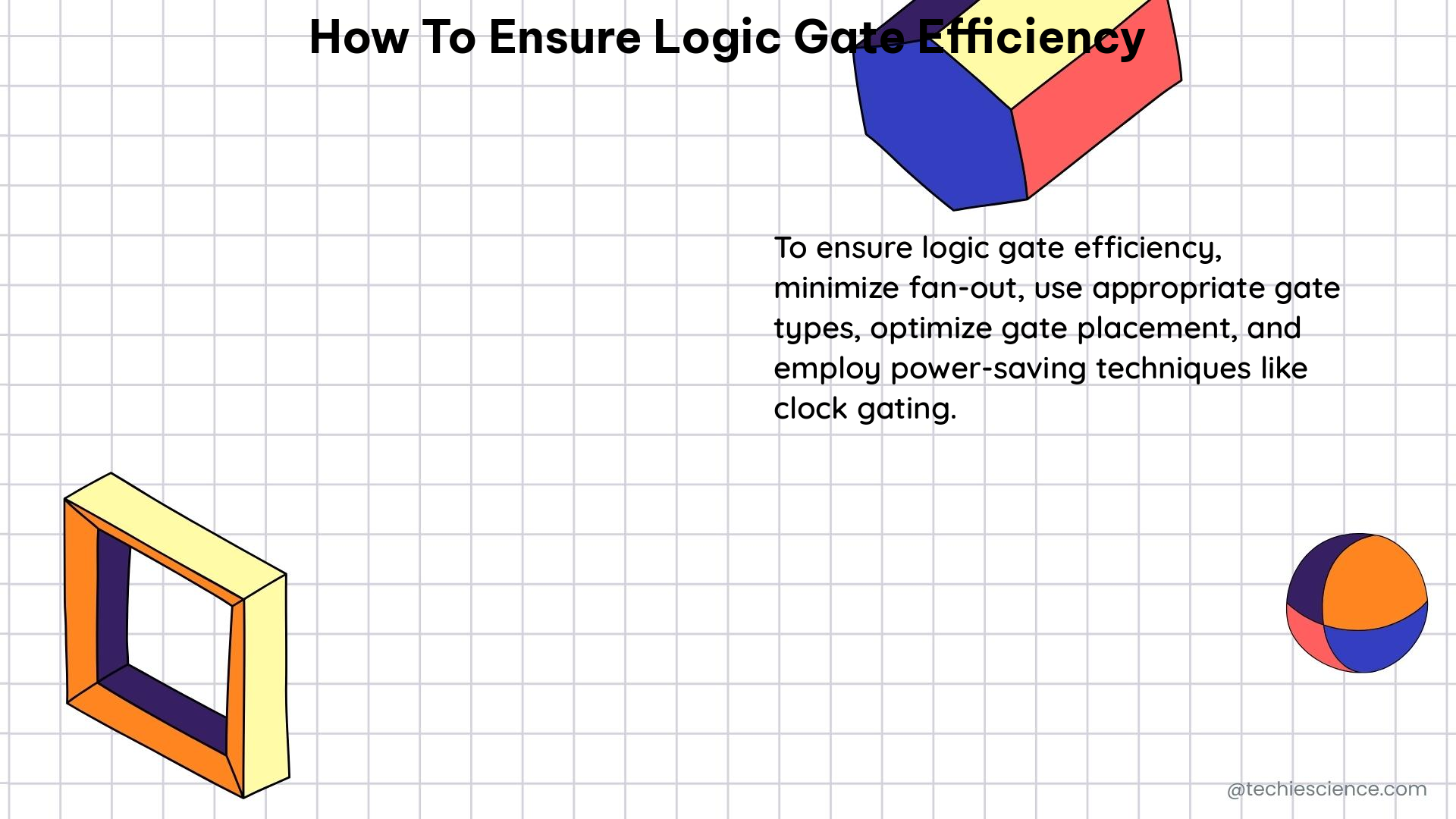Summary
Ensuring the efficiency of logic gates is crucial in the design and implementation of digital circuits. This comprehensive guide delves into the key factors to consider, including design, implementation, optimization, and testing techniques, as well as the measurement and quantification of logic gate performance. By following the principles outlined here, electronics engineers and students can create reliable and efficient digital circuits that meet their design requirements.
Design and Implementation of Logic Gates

When designing and implementing digital circuits, the selection and combination of logic gates are critical to achieving optimal efficiency. Understanding the fundamental characteristics of different logic gate types, such as AND, OR, and NOT gates, is essential. AND gates output a logical 1 only when both inputs are 1, OR gates output a logical 1 when either input is 1, and NOT gates produce the opposite of the input.
By combining these basic logic gates in various configurations, more complex circuits can be constructed to perform a wide range of functions. The choice of logic gates and their interconnections directly impacts the overall efficiency of the digital circuit.
Optimization Techniques for Logic Gates
To further enhance the efficiency of logic gates, several optimization techniques can be employed:
-
Logic Synthesis Software: Automated logic synthesis tools can analyze the circuit design and optimize the logic gates for improved performance, power consumption, and area utilization.
-
Karnaugh Maps: This graphical method can help simplify Boolean expressions and minimize the number of logic gates required to implement a given function.
-
Hierarchical Layout: Organizing the circuit design into a hierarchical structure, where smaller logic blocks are grouped into larger, more manageable symbols, can improve the overall efficiency and ease of understanding.
-
Technology-Specific Optimizations: Leveraging the specific characteristics of the manufacturing technology, such as transistor properties or interconnect capacitances, can lead to further optimizations and the replacement of certain logic gates with more efficient equivalents.
Testing and Verification of Logic Gate Circuits
Ensuring the correct functionality of logic gate circuits is crucial. Various testing techniques can be employed to validate the design:
-
Simulation: Simulating the circuit’s behavior in a software environment can help identify and resolve issues before physical implementation.
-
Emulation: Testing the circuit in a real-world environment, such as on a prototyping board or FPGA, can uncover any discrepancies between the simulated and actual behavior.
-
Formal Verification: Mathematical proofs and formal methods can be used to rigorously verify that the circuit meets its specified requirements and constraints.
Measurement and Quantification of Logic Gate Efficiency
To assess the efficiency of logic gate circuits, several key metrics can be measured and quantified:
-
Power Consumption: The power consumption of a logic gate can be calculated using the formula P = C × V^2 × f, where C is the gate capacitance, V is the voltage supply, and f is the frequency of operation.
-
Delay: The propagation delay of a logic gate, typically in the range of nanoseconds, determines the speed at which the circuit can operate.
-
Area: The physical size of the logic gate, measured in square millimeters or square centimeters, impacts the overall chip area and cost.
-
Throughput: The number of operations the logic gate can perform per second, ranging from millions to billions, reflects the circuit’s processing capability.
By measuring and comparing these metrics, designers can make informed decisions to optimize the efficiency of their logic gate circuits.
Figures, Data Points, and Measurements
- Logic gates typically have a delay of a few nanoseconds, depending on the gate type and manufacturing technology.
- Power consumption of logic gates can range from a few milliwatts to a few watts, depending on the gate type and technology.
- The area of a logic gate can vary from a few square millimeters to a few square centimeters, depending on the manufacturing process.
- Throughput of logic gates can range from a few million operations per second to a few billion operations per second, depending on the technology used.
Conclusion
Ensuring the efficiency of logic gates is a crucial aspect of digital circuit design and implementation. By understanding the principles of logic gate design, optimization techniques, testing methods, and performance measurement, electronics engineers and students can create reliable and efficient digital circuits that meet their design requirements. This comprehensive guide provides the necessary knowledge and tools to achieve optimal logic gate efficiency in various electronic applications.
Reference:
- Quantitative Characterization of Reconfigurable Transistor Logic Gates
- How To Design And Implement Digital Circuits Using Logic Gates and Boolean Algebra
- What is Risk Quantification? The Complete Guide – LogicGate

The lambdageeks.com Core SME Team is a group of experienced subject matter experts from diverse scientific and technical fields including Physics, Chemistry, Technology,Electronics & Electrical Engineering, Automotive, Mechanical Engineering. Our team collaborates to create high-quality, well-researched articles on a wide range of science and technology topics for the lambdageeks.com website.
All Our Senior SME are having more than 7 Years of experience in the respective fields . They are either Working Industry Professionals or assocaited With different Universities. Refer Our Authors Page to get to know About our Core SMEs.